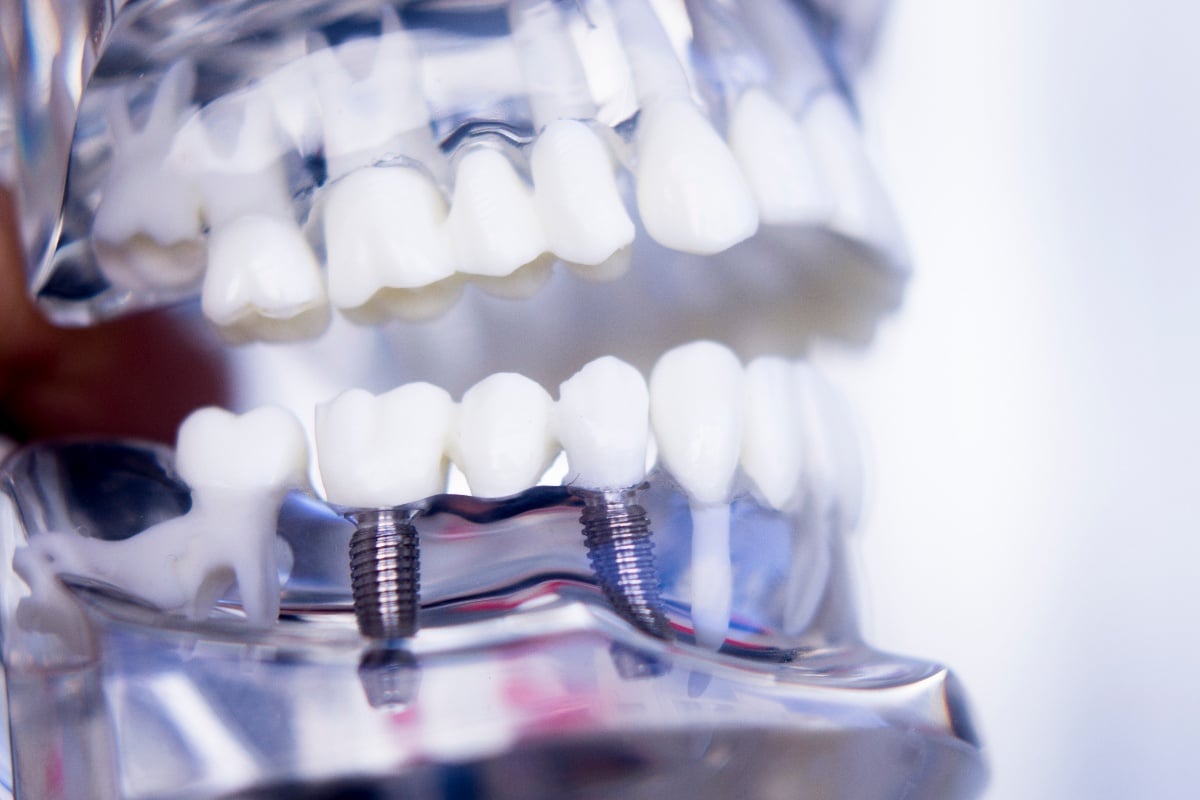Dental implants are widely used to replace missing teeth and create the beautiful smiles that patients have always desired. Several factors determine the feasibility of implants, such as your overall health, medications you take, lifestyle habits, and oral health. One common concern is whether you can get dental implants if you have gum disease.
The Role of Dental Implants in Maintaining Oral Health
Dental implants revolutionized restorative dentistry by providing a reliable and aesthetically pleasing solution for replacing a missing tooth. However, their benefits extend beyond filling a gap between natural teeth. They also play a valuable role in maintaining your oral health.
Unlike other tooth replacement options, dental implants replace the roots of missing teeth with a biocompatible post. This post is permanently placed in the bone to serve as the foundation and support for a naturally-appearing replacement tooth.
Dental implants contribute significantly to oral health by:
- Maintaining jawbone health. Implants prevent bone loss by stimulating the jawbone in a way that is similar to natural tooth roots.
- Promoting better oral hygiene. Unlike dentures and bridges that require special cleaning practices and materials, dental implants can be cared for just like natural teeth.
- Preserving facial structure. By maintaining jawbone health, implants help preserve facial structure and prevent the sagging appearance associated with tooth loss.
- Avoiding damage to adjacent teeth. Dental implants preserve your natural teeth by not requiring them to be used to support the replacement teeth.
- Restoring chewing function. Dental implants can restore your natural biting pressure, allowing you to eat your regular diet without restrictions.
- Improving speech. While other replacement options can provide excellent solutions, they often lead to changes in how you pronounce certain words. Dental implants overcome this obstacle by closely reproducing your natural tooth size, shape, and position in the mouth.
- Preventing teeth shifting. When a gap is due to a missing tooth, the surrounding teeth tend to move into that space. This shift can result in misaligned teeth and bite problems. Dental implants can close the gap and prevent teeth from shifting.
- Enhancing your smile. Dental implants are used widely in cosmetic dentistry to restore the natural appearance of missing teeth, improve your smile, and boost your confidence.
Types of Gum Disease
According to the Institute of Dental and Craniofacial Research, gum disease affects almost half of adults between 45 and 64. They also report that “gum disease is a risk factor for nearly 60 other adverse health conditions, including Alzheimer’s disease, diabetes, and heart disease.”
Also known as periodontal disease, gum disease is primarily caused by plaque buildup, a sticky film of bacteria that continually forms on teeth. If not removed, plaque can cause inflamed gums and tooth decay.
There are two primary types of gum disease: gingivitis and periodontitis. Both can vary in severity and significantly affect oral health if not addressed promptly and appropriately.
Gingivitis
Gingivitis is a mild form of gum disease that causes irritation, redness, and swelling (inflammation) of your gingiva, the part of your gums that surrounds your teeth. It is important to treat gingivitis promptly because it can lead to periodontitis and possible tooth loss. In its early stages, gingivitis can be eliminated at home with improved toothbrushing and flossing.
The primary cause of gingivitis is poor oral hygiene, which allows plaque to accumulate on the teeth. Eventually, plaque can harden and become tartar. Tartar, which requires removal by a dental professional, worsens gingivitis and increases the risk of severe gum disease. In addition, certain factors such as smoking, diabetes, inadequate nutrition, stress, and certain medications can also contribute to developing gingivitis.
The signs and symptoms of gingivitis include:
- Red, swollen gums. Healthy gums are pale pink and firm. Gingivitis may make your gums puffy, soft, red, and swollen.
- Bleeding gums. Inflamed gums typically bleed during brushing or flossing.
- Tender gums. Gingivitis can cause your gums to feel tender or painful to touch, especially when brushing or flossing.
- Bad breath. The bacteria that causes gum inflammation also causes persistent bad breath, known as halitosis.
- Receding gums. Untreated gingivitis eventually causes your gums to pull back or recede. This can result in teeth being hypersensitive to air and cold.
Periodontitis
Periodontitis is a more severe form of gum disease that results when gingivitis is not treated. It causes inflammation, infection, and eventual loss of the bone supporting your teeth. Additionally, it results in the loss of gum tissue and the ligament that attaches your teeth to your jawbone. The resulting pocket between your gums and teeth traps food and plaque, making periodontitis a progressively destructive disease. As the pockets deepen, teeth loosen and may ultimately need extracting.
Periodontitis can cause various symptoms, including:
- Swollen or puffy gums.
- Bright red or purplish gums.
- Gums that bleed easily.
- Painful gums.
- Pus between your teeth and gums.
- Bad breath and a bad taste in your mouth.
- Loose teeth.
- Receding gums.
- Spaces developing between your teeth.
- A change in the way your teeth fit together when you bite.
Implants and Gum Disease
Successful dental implants depend on the quality and quantity of jawbone where the implant will be surgically placed. Healthy bone is crucial because it provides a secure site for anchoring the implant to the jaw. Once the implant is in place, healthy surrounding bone provides the environment needed to fuse with the implant. Successful osseointegration creates a strong foundation for the replacement tooth.
When bone health is compromised due to conditions such as gum disease, it can adversely impact the success of dental implants. Insufficient bone density or volume can lead to poor osseointegration, which can cause the implant to be less stable and potentially fail over time.
Additionally, a healthy bone structure contributes to the aesthetic outcome of dental implants. The healthy bone that supports the soft tissues of the face and lips ensures a natural-looking smile after implant placement and restoration.
Although active gum disease can impede the dental implant process, this does not mean that you are permanently ineligible for dental implants if you have gum disease.
If you have gum disease, the first step is to restore the health of your gums and underlying bone. In the case of gingivitis, this can be something as simple as having professional teeth cleaning and improving your home oral care.
For more severe gum disease, the treatment may involve deep cleanings, periodontal surgery, or bone grafting. Dental implants can be considered once your oral health is restored and your gums are free of inflammation and infection.
Preventing Gum Disease
It is critical to keep your gums free of disease after implant placement. Several steps can help you accomplish this, such as:
- Brushing your teeth at least twice daily using a soft-bristled toothbrush.
- Flossing daily to clean the surfaces of your teeth that your toothbrush can't reach.
- Using a mouthwash recommended by your dentist.
- Eating a healthy diet rich in fruits and vegetables and limiting your sugary foods and drinks intake.
- Avoiding tobacco products because these significantly increase your risk of gum disease.
- Drinking plenty of water to wash away food particles and bacteria that increase your risk of plaque buildup.
- Having regular dental check-ups and cleanings for early detection and treatment of any signs of gum disease.
- Replacing your toothbrush regularly. Dental professionals recommend replacing your toothbrush every three to four months or sooner if the bristles are frayed, missing, or damaged.
Schedule an Appointment
To learn more about how Palmetto Dental Arts can help you have the smile you have always wanted, call us or contact us online.







